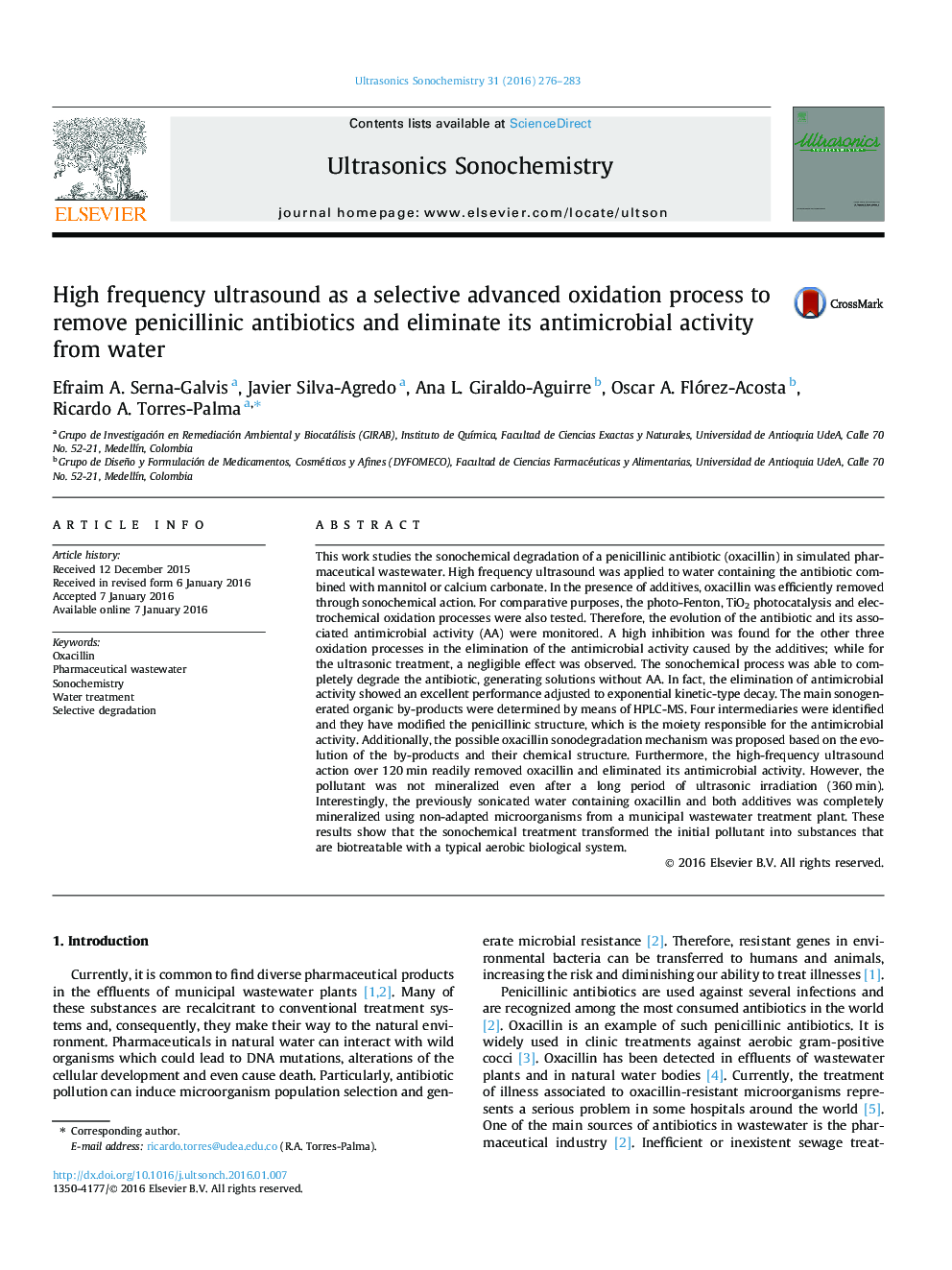| کد مقاله | کد نشریه | سال انتشار | مقاله انگلیسی | نسخه تمام متن |
|---|---|---|---|---|
| 1265672 | 1496873 | 2016 | 8 صفحه PDF | دانلود رایگان |
• Ultrasound selectively removes oxacillin from synthetic pharmaceutical water.
• Additives did not affect the sonochemical elimination of antimicrobial activity.
• Differently to sonochemistry, other oxidation processes were strongly inhibited.
• The antibiotic is transformed into by-products without antimicrobial activity.
• Sonotreated water is completely mineralized using a subsequent biological process.
This work studies the sonochemical degradation of a penicillinic antibiotic (oxacillin) in simulated pharmaceutical wastewater. High frequency ultrasound was applied to water containing the antibiotic combined with mannitol or calcium carbonate. In the presence of additives, oxacillin was efficiently removed through sonochemical action. For comparative purposes, the photo-Fenton, TiO2 photocatalysis and electrochemical oxidation processes were also tested. Therefore, the evolution of the antibiotic and its associated antimicrobial activity (AA) were monitored. A high inhibition was found for the other three oxidation processes in the elimination of the antimicrobial activity caused by the additives; while for the ultrasonic treatment, a negligible effect was observed. The sonochemical process was able to completely degrade the antibiotic, generating solutions without AA. In fact, the elimination of antimicrobial activity showed an excellent performance adjusted to exponential kinetic-type decay. The main sonogenerated organic by-products were determined by means of HPLC-MS. Four intermediaries were identified and they have modified the penicillinic structure, which is the moiety responsible for the antimicrobial activity. Additionally, the possible oxacillin sonodegradation mechanism was proposed based on the evolution of the by-products and their chemical structure. Furthermore, the high-frequency ultrasound action over 120 min readily removed oxacillin and eliminated its antimicrobial activity. However, the pollutant was not mineralized even after a long period of ultrasonic irradiation (360 min). Interestingly, the previously sonicated water containing oxacillin and both additives was completely mineralized using non-adapted microorganisms from a municipal wastewater treatment plant. These results show that the sonochemical treatment transformed the initial pollutant into substances that are biotreatable with a typical aerobic biological system.
Journal: Ultrasonics Sonochemistry - Volume 31, July 2016, Pages 276–283
